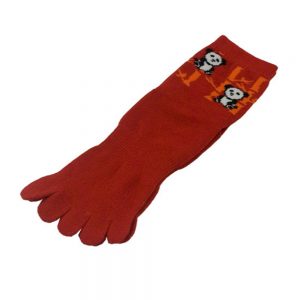Kimonos have captured the hearts of fashion lovers, cultural enthusiasts, and bridal parties alike. Whether you’re admiring their rich history or planning to incorporate them into your wardrobe or special event, there’s no denying the timeless elegance of these iconic garments. Below, we answer seven common questions from our customers to help you make informed decisions about buying and styling kimono.
1. What Is the Most Popular Pink Kimono?
Regarding pink kimonos, delicate pastel hues with floral patterns remain timeless favorites. Our most popular pink kimono features cherry blossom prints on a blush-toned base. The pink cherry blossom yukata is a classic combination that suits any occasion from lounging at home to wearing as a statement piece.
Are you looking for something versatile? The Pink Sakura Blossom Happi Coat combines soft pink colors with subtle traditional motifs. This makes it perfect for bridesmaid outfits, gifts, or casual styling.
2. Do You Sell Vintage Kimonos?
We do not sell vintage kimono. A vintage kimono is simply used clothing. While suitable for many seeking a specific pattern or vintage feel, this market can be tricky to navigate. Many dealers exaggerate the condition quality. Used kimono are fairly abundant from wholesale houses in Japan or China. They sell large quantities of used robes in bulk by the pound. A dealer will bid as little as possible to offset the risk of unusable clothing that may be found in the lot.
Each piece will be graded reflecting the condition. Commonly, these robes have tears, stains, rips, or other damage. We found that when asking three dealers to grade a robe, we received three different grades. With the variance in grading, the random pricing, and the used condition lottery, our customers have come to rely on new, quality-known robes as their choice.
3. Can Yukata Be Worn as Bridesmaid Robes?
Absolutely! Yukata, the lightweight and casual summer version of a kimono, makes a stunning and unique option for bridesmaid robes. With their flowy silhouettes and vibrant colors, yukata robes are comfortable, photogenic, and suitable for a variety of wedding themes.
For bridal parties looking for a cohesive yet elegant look, we recommend choosing a complimentary patterned yukata. Not only do they make your bridesmaids look effortlessly chic, but they can also double as memorable keepsakes your friends will cherish.
4. Can You Help Find a Dragon Kimono?
Yes, dragon kimonos are a bold and striking choice that symbolizes strength, power, and tradition. These designs often feature intricately embroidered or printed dragon motifs, making them a go-to for individuals seeking a standout look.
Whether you’re looking for a traditional black dragon kimono with gold accents or a more modern interpretation, we invite you to browse our online store to find a dragon kimono that speaks to your unique style.
5. Is It Wise to Buy a Kimono on Amazon?
While Amazon may seem like a convenient option, purchasing a kimono from marketplaces like ours can provide better quality control, authenticity, and personalized service. We are an employee-owned business and do the legwork for you. Many Amazon listings may feature mass-produced items that lack craftsmanship and cultural accuracy. Many Amazon sellers claim their robes are “Japanese Style” which translates to “made in China”. The same is true on Etsy. Many of the robes we see on other online sites are poorly made, feature poor-quality fabrics and sizing is misleading.
By shopping with a specialized and trusted retailer, you’ll receive quality garments, accurate sizing, and access to unique designs.
6. Do You Have Unisex Kimonos?
Yes, we carry a variety of unisex kimonos designed to suit all styles and preferences. These kimonos generally feature classic patterns or minimalist designs that look great on everyone. While our robes state male or female, it is really up to the individual when deciding what style or pattern they choose. If a female is interested in a male style, usually selecting the next smaller size hits the mark. Our unisex collection blends tradition with everyday wearability, allowing anyone to enjoy the beauty of kimonos.
Popular options include kimono robes and lightweight yukata, both of which are versatile and easy to style for multiple occasions.
7. Do You Offer Black Kimonos?
Certainly! Black kimonos are a wardrobe staple, perfect for those who appreciate timeless elegance. Whether you’re looking for a formal piece adorned with intricate embroidery or a chic, minimalist robe, we have options to suit every occasion.
Our bestselling black kimono for women features subtle floral patterns, adding a touch of sophistication while maintaining a clean, modern look. Perfect for lounging at home, adding a dramatic layer to your outfit, or even as bridal attire, a black kimono is always a good idea. For men, we have beautifully embroidered kimono and yukata as well as a solid black robe which is popular for meditation, martial arts or simply lounging.
Find Your Perfect Kimono Today
From vintage-inspired designs to bold patterns that make a statement, we’re here to help you find the kimono that fits your style and needs. Whether you’re searching for a pink kimono, a bridesmaid-ready yukata, or a dragon kimono, our curated selection has something for everyone.
Explore our collection and bring the timeless elegance of kimonos into your life!












